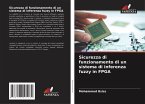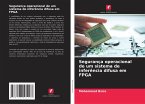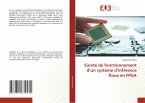The credibility of a safety related system can be performed by a qualitative and quantitative analysis in order to associate a safety integrity level (SIL). These analyzes are based on international standards such as the IEC 61508 standard and the ISA standard. There are different methods to establish these types of analysis: Reliability Block Diagram (RBD), Fault Tree Analysis (FTA) , and and Markov Models . This book proposes the analysis of a safety fuzzy logic controller (SFLC) implemented in FPGA with 1 out of 2 (1oo2) architectures.Two evaluation methods are applied. We demonstrate how from hardware characteristics parameters, such as rate of dangerous detected and undetected failure , the diagnostic coverage, proof test interval and other parameters to calculate the average probability of dangerous failure on demand and consequently the determining the safety integrity level (SIL) for SFLC.
Bitte wählen Sie Ihr Anliegen aus.
Rechnungen
Retourenschein anfordern
Bestellstatus
Storno








